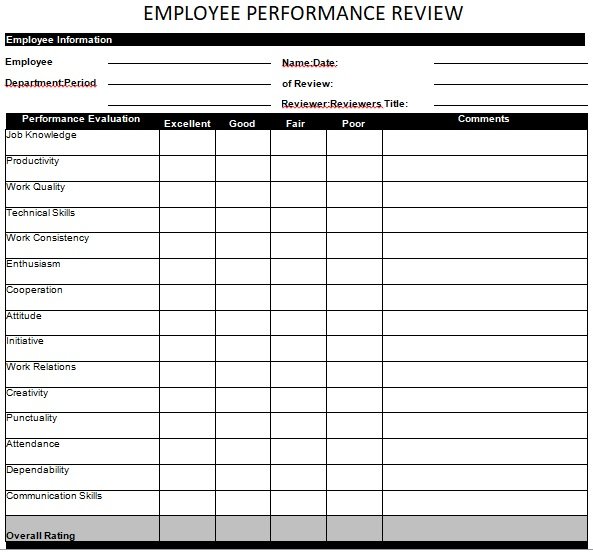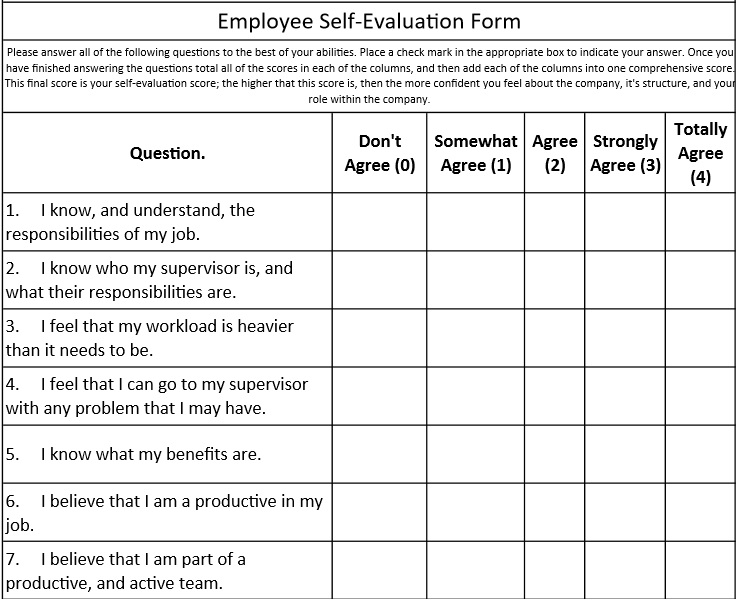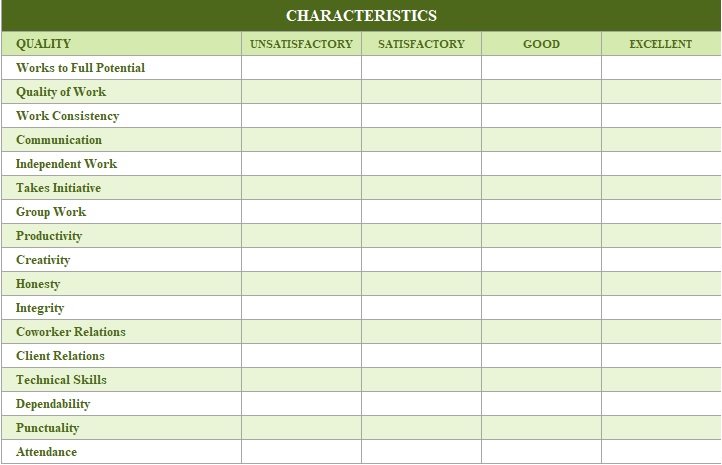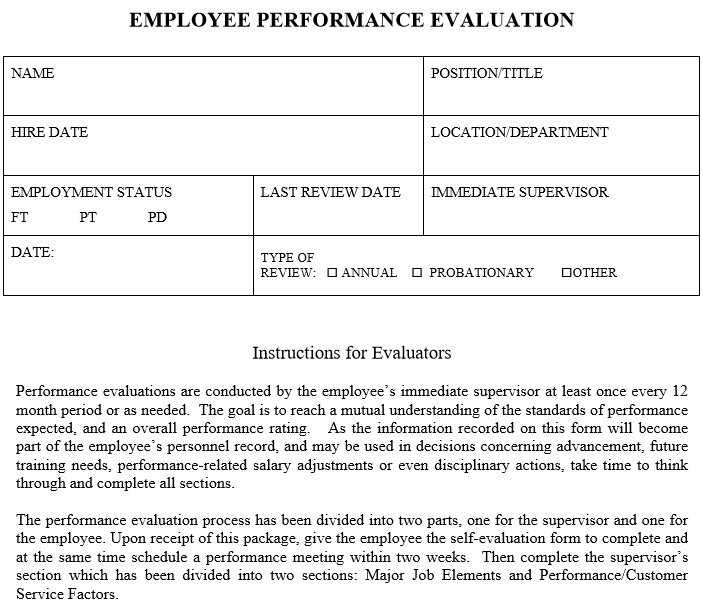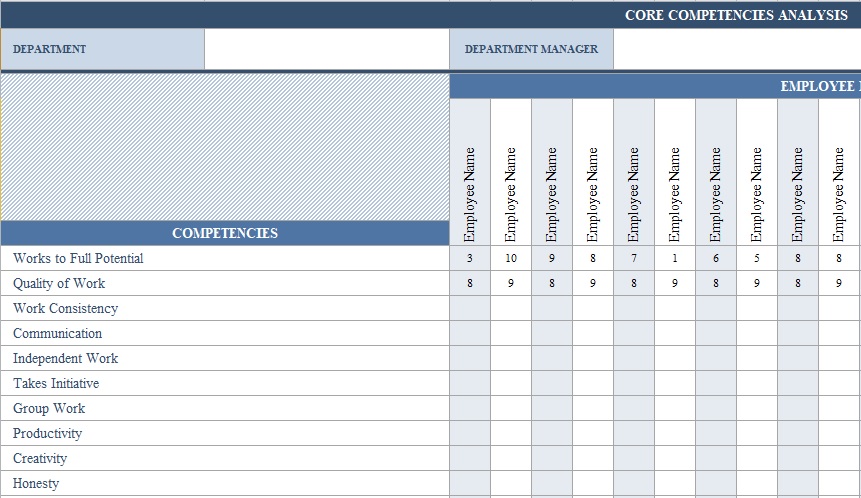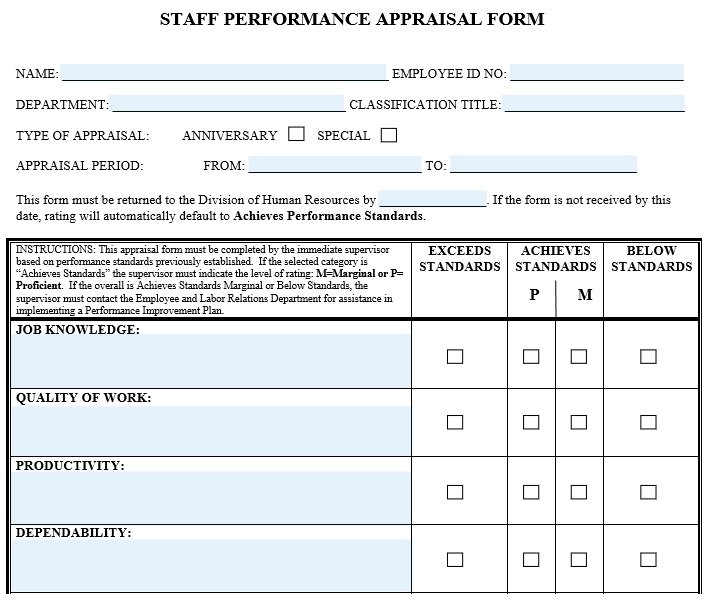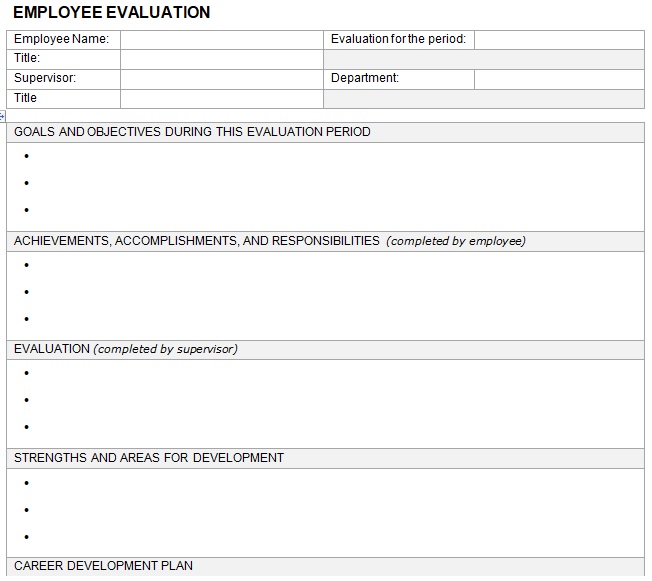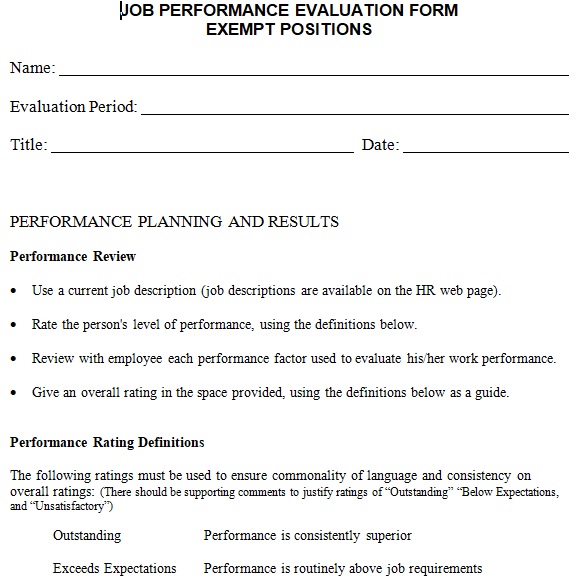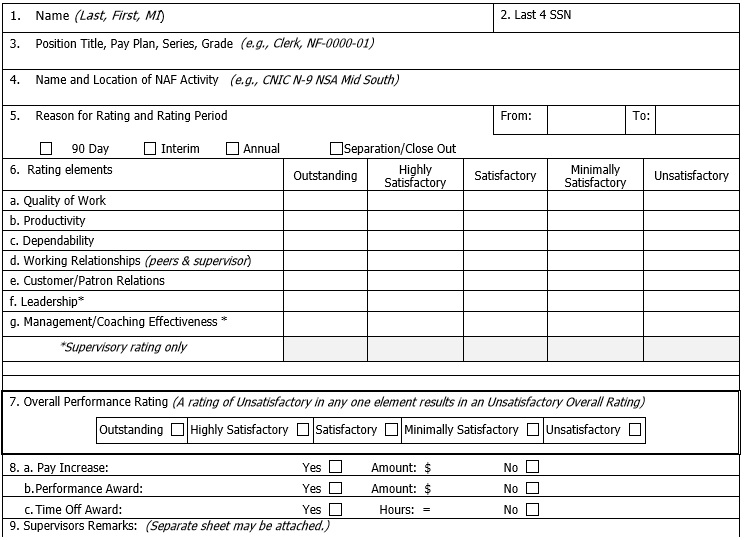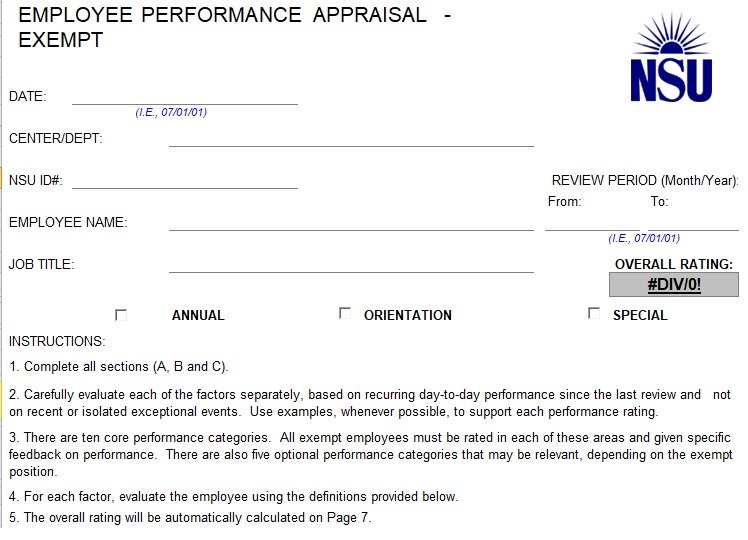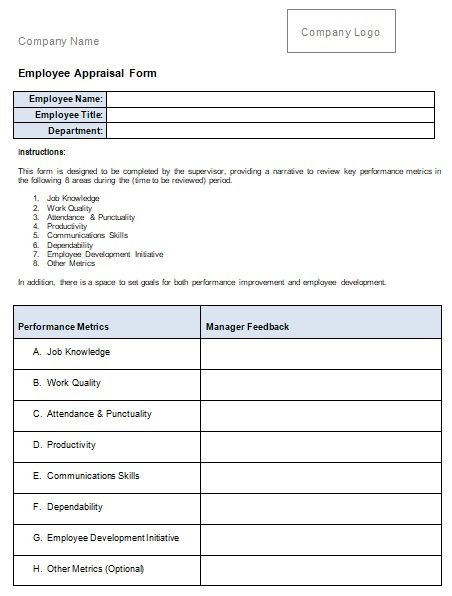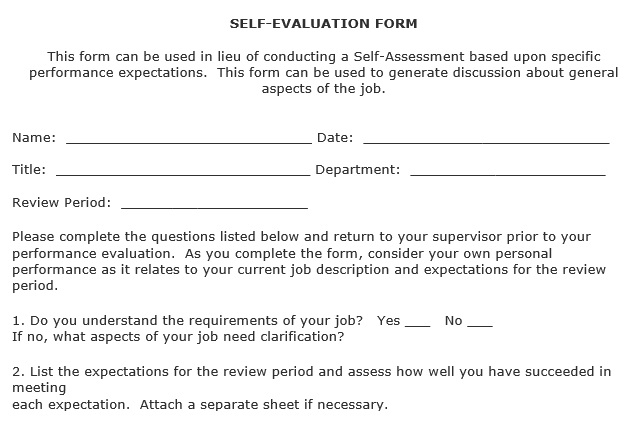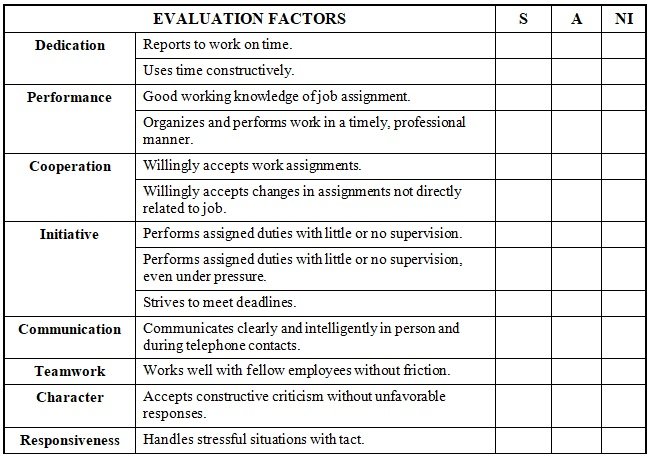Managers use an employee performance review template to evaluate their employee’s work performance. Conducting performance reviews helps to keep employees engaged, motivated, and proactive. It helps the employees to understand what is working and what they need to improve.
Table of Contents
- 1 What is an employee performance review?
- 2 What should include in an employee performance evaluation?
- 3 What shouldn’t be included in an employee performance review template?
- 4 The purpose of employee performance review:
- 5 How do you give constructive feedback?
- 6 Time-oriented employee review templates:
- 7 How should you prepare for an effective performance review?
- 8 How to improve your performance review process with the template?
- 9 Faqs (Frequently Asked Questions)
What is an employee performance review?
An employee performance preview is a formal assessment that evaluates an employee’s work at a particular time. Moreover, it assesses the employee’s work performance, identifies strengths and weaknesses, offers feedback, and set goals for future performance. It is also known as performance preview or performance appraisal.
Most organizations used it to support decisions related to training and career development. Furthermore, it is also used for compensation, transfers, promotions, and employment termination.
The following key information should be included in your performance review;
Employee strengths
Regarding the team member’s strengths, always include feedback and praise like effective problem solving and communication skills. This way, you can determine what the employee is doing well.
Employee weaknesses
It is also important to discuss for the team member any weaknesses or areas of opportunity. The ability to work in a team setting or when and how to share ideas more effectively are included in areas of focus. This is a chance for the team member to get insight into where they have to improve.
Rating system
Your performance review should include a system in order to identify areas of improvement. This system gauges each employee’s skill level in pre-set categories. Rating employees based on standards is a common example. These standards may include consistently exceeds expectations, often exceeds expectations, and needs development. To assess the employee across different categories such as strategic mindset, communication skills, and team collaboration, you might use these ratings.
Review period
You will measure an employee’s performance relative to a set period during the performance review process. All organizations slightly do this differently. However, the common periods are annually, bi-annually, or quarterly.
Set goals
By having clear SMART goals, employees get a sense of where they can improve and what they should pay attention to in the future. Also, it assists you in clearly defining performance expectations for your employees.
What should include in an employee performance evaluation?
An employee performance evaluation includes an assessment of these skills;
- Communication
- Cooperation and teamwork
- Problem-solving
- Quality and perfection of work
- Attendance
- Punctuality and reliability.
- The capability to complete goals and meet deadlines.
A review must include the position-specific competencies along with the employee’s accomplishments and contributions to their organization.
After discussing the key areas of assessment, you have to evaluate and weigh each to take an overview of the employee’s overall performance. It’s up to your company to need how to organize or format the information. Whatever the system make sure it is objective and easy to understand.
After that, arrange a meeting with each employee and discuss your findings.
What shouldn’t be included in an employee performance review template?
An employee performance review shouldn’t include the following;
Unexpected assessments
You should communicate the details of the review process and what is expected of employees as early as possible. Employees consider the unexpected assessments as a rude shock.
Getting personal
Make sure feedback never focuses on the persons themselves. It must focus on behavior and actions. The employee performance review doesn’t criticize personal attributes.
Bias and limitation
Never try and impose the right working methods on employees in reviews when work gets done safely and goals are met.
Non-specifics
After receiving meaningless comments, employees will feel confused about how their work has been checked. They also don’t know whether they need to improve or not. Thus, ensure that your feedback must be clear and task-focused.
No guidance
You must include guidance on the performance review form so that employees improve their work or their development. You can guide them through expertise, training, counseling, coaching, etc.
The purpose of employee performance review:
Employee performance review allows employees to evaluate how well their efforts will contribute to achieving the company’s goals. The evaluation outcomes make the employees able to continue to align with changes in the long-term goals. In addition, it is a great way to highlight employee achievements and discuss any concerns about their job.
Through workplace performance, employees can understand the following;
- What they are currently performing
- What they have to improve
- How their efforts will help the company in achieving their long-term goals
Conducting performance reviews enables managers to determine high-performing members of their team. Also, it helps them to encourage their growth and personal development.
How do you give constructive feedback?
Constructive criticism pays attention to giving helpful feedback supported by specific examples. This provides team members the context that they require to understand why they got the feedback they did. You should make sure to do the following in order to give effective feedback;
Inform the employee in advance
It can be tempting to launch into a feedback session and get it over with as soon as possible in case you don’t have a lot of experience giving feedback. But, in fact, the more time you provide your team member to prepare to get the feedback, the more beneficial the session will be. This is because team members who are informed in advance, without becoming defensive or passive, they can get into the right mindset to receive feedback openly.
Furthermore, before you sit down for the official conversation, make sure o let the employee know about the feedback session. In case, if it is possible them also inform the employee what the feedback will be about. This way, they can have time to prepare for the meeting and can ask any relevant questions on their end.
Communicate in a private setting
If you share constructive feedback in a group setting, it is easy for it to accidentally turn into a negative experience. Make sure you’re communicating feedback in a private one-on-one setting as type or style of performance review doesn’t matter. This also makes sure that the employee doesn’t feel targeted in a group setting.
Offer actionable feedback
Always pair your feedback with data-backed insights and actionable next steps in order to make sure it is constructive. By doing do, you make transparency around why the employee got a particular review on the basis of their work. Give particular feedback with details including;
- What’s been working well?
- What they can improve
- How to get there
Document feedback in writing
You must document the feedback in writing. This can be done in a feedback tool. That way, you and the employee can measure objectives by looking back on past performance. This concerns positive and constructive feedback. A great way to increase team morale is by keeping track of the team member’s major wins while reducing impostor syndrome and burnout.
Time-oriented employee review templates:
Annual performance review
As its name implies, an annual performance review measures a team member’s accomplishment once in a year. The overall performance may pay attention to core competencies and individual objectives relative to performance management.
An annual review is an effective way to determine performance history over a period of one year. You should make sure to note down the performance review in a shared space. You and your employees review what they did over the course of the year by documenting work in a central source of truth.
Mid-year performance review
In this mid-year performance review, a team member’s accomplishment is measured bi-annually. This is an effective option for teams who want to make transparency around performance.
Moreover, team members gauge their performance and implement changes where required by receiving an opportunity to see where their performance lands every six months.
Quarterly performance review
A quarterly performance review assesses a team member’s success four times a year. This provides your employee a more consistent chance to turn weaknesses into strengths. Since you do on constructive feedback, it is essential to focus as much time and energy on positives likewise other performance review styles.
Year-end performance review
Against the financial success of the company, a year-end performance review measures a team member’s success. Alongside the assessment of long-term company goals, this review is commonly scheduled and is used frequently for operations and marketing teams. The reason behind is that their work is closely aligned with financial revenue objectives.
30-60-90 performance review
A new team member’s success is measured by a 30-60-90 day performance review. After the new team member’s first, second, and third months in the role, this method reviews the new team member against job expectations.
To provide new team members a baseline of how they’re meeting their role expectations, this performance review is a great way. Also, it makes transparency around areas where they have to pay attention to more energy and time-perfecting skills.
How should you prepare for an effective performance review?
Let us discuss below how a manager and an employee prepare for a performance review;
As a manager
- The manager should review the past goals and track KPIs. To make an objective assessment of the employee’s work, use available metrics.
- Instead of focusing on how many hours or efforts an employee has put in pay attention to their positive contributions to the company.
- It would be beneficial to request additional feedback from whom they have interaction such as their peers or other line managers.
- Try to set personal biases.
As an employee
- Employees should gather and prepare proof of their performance such as aggregated KPIs, notable accomplishments, feedback from colleagues, and more.
- Consider your career goals.
- You can also provide feedback because your employer may like to hear what the company can do to support your performance.
- Don’t inflate your personal ratings because this can put you in a difficult position.
How to improve your performance review process with the template?
An important part of any workplace is giving and receiving feedback. It assists you in learning and improving your skills. It would be difficult where to begin and what to include. Also, identifying a way to make the process more engaging for everyone may also be hard. Thus, with the help of a performance review template, you can improve your next performance review. It helps you to make an efficient and engaging performance review program.
Faqs (Frequently Asked Questions)
Here are six pieces of advice on how to conduct an employee evaluation that benefits you and your employee;
1- Make all the feedback ahead of time.
2- Keep your remarks comprehensible and precise.
3- Give your employees a copy of the completed evaluation form.
4- Retain employee review meetings a two-way discussion.
5- End your conversation with the advice of focus on the future.
Writing a self-assessment is not as easy as you think. This is because analyzing oneself may be difficult especially when it is submitted to a supervisor for review. Following are the tips that will help you how to write a self-assessment performance review;
1- The main purpose of self-assessment is to highlight your accomplishments and recollect milestones in your professional development. You should point out your particular tasks and projects that highlight your best work. While explaining the accomplishments, describe its impacts on the whole business.
2- Don’t just highlight your achievements, also be honest. Being honest means you have to pint out your weakness that you have improved. Moreover, also discuss the past failures that taught you valuable lessons.
3- Next, during self-assessment don’t stagnate. You should list your goals and objectives for the coming year while writing the self-assessment. It will show that you are not content to settle. However, it’s significant to commit to improving and educating yourself.
4- While describing the accomplishments also attach the hard data. It will show that what you have done throughout the year is really beneficial.
5- When writing the self-assessments employees should always be professional.
There are three top goals for a performance review;
1- To encourage be on time.
2- To motivate for paying attention to completing a task.
3- To encourage leadership.
The standard practice is to conduct performance reviews every 6-12 months. For new and entry-level candidates, start performance sooner such as after three and six months.
There are 5 standard performance ratings;
1- Outstanding
2- Exceeds Expectations
3- Meets Expectations
4- Needs Improvement
5- Unacceptable

